 W
WAnthony Frederick Blunt, styled Sir Anthony Blunt KCVO from 1956 to November 1979, was a leading British art historian who in 1964, after being offered immunity from prosecution, confessed to having been a spy for the Soviet Union.
 W
WOtto Albrecht Alfred von Bolschwing was a German SS-Hauptsturmführer in the Nazi Sicherheitsdienst (SD), Hitler's SS intelligence agency. After World War II von Bolschwing became a spy and worked for the Central Intelligence Agency (CIA) in Europe and later in California.
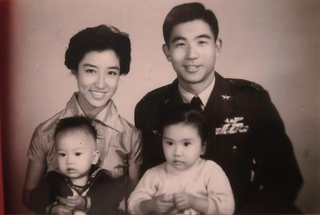 W
WChang Liyi, also known as Jack Chang, was a pilot in the Republic of China Air Force with the rank of major. A member of the CIA-trained Black Cat Squadron, he flew the American U-2 reconnaissance aircraft to spy on China's nuclear program. He was shot down on 10 January 1965 over Baotou, Inner Mongolia and held in mainland China for 17 years. Chang was released from custody in 1982, but not granted permission to return to Taiwan until 1990, living the interim years in the United States.
 W
WAndrew Stanislaus Ciechanowiecki, Dąbrowa Coat of Arms, was a Polish-British nobleman, diplomat, prisoner and agent of Communist Poland, economist, academic, art historian, philanthropist, art collector, antique dealer, antiquarian and exhibition curator. He was considered an authority on French baroque sculpture in the second half of the 20th century.
 W
WMiles Axe Copeland Jr. was an American musician, businessman, and Central Intelligence Agency (CIA) officer best known for his close personal relationship with Egyptian leader Gamal Abdel Nasser and his "controversial books on intelligence," including The Game of Nations: The Amorality of Power Politics (1969) and The Game Player: Confessions of the CIA's Original Political Operative (1989). In his memoirs, Copeland recounted his involvement in numerous covert operations, including the March 1949 Syrian coup d'état, the Egyptian 1952 Coup d'etat and the 1953 Iranian coup d'état. A conservative influenced by the ideas of James Burnham, Copeland was associated with the American political magazine National Review. In a 1986 Rolling Stone interview, he stated, "Unlike The New York Times, Victor Marchetti and Philip Agee, my complaint has been that the CIA isn't overthrowing enough anti-American governments or assassinating enough anti-American leaders, but I guess I'm getting old."
 W
WEdgar Feuchtinger was a German General (Generalleutnant) during the Second World War. Feuchtinger was commander of the 21st Panzer Division during the Normandy Invasion. Later in 1944 he was tried and convicted of treason by the Reich court, demoted and sentenced to execution. The sentence was commuted by the intervention of Adolf Hitler. Feuchtinger did not report to his next assignment, and avoided the German military police until he could surrender to the Allies.
 W
WKlaus Emil Julius Fuchs was a German theoretical physicist and atomic spy who supplied information from the American, British, and Canadian Manhattan Project to the Soviet Union during and shortly after World War II. While at the Los Alamos National Laboratory, Fuchs was responsible for many significant theoretical calculations relating to the first nuclear weapons and, later, early models of the hydrogen bomb. After his conviction in 1950, he served nine years in prison in the United Kingdom and then moved to East Germany where he resumed his career as a physicist and scientific leader.
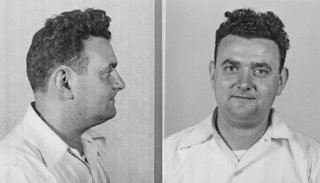 W
WDavid Greenglass was an atomic spy for the Soviet Union who worked on the Manhattan Project. He was briefly stationed at the Clinton Engineer Works uranium enrichment facility at Oak Ridge, Tennessee, and then worked at the Los Alamos Laboratory in New Mexico from August 1944 until February 1946.
 W
WRuth Leah Greenglass was an American citizen who acted as a spy for the Soviet Union along with her husband, David Greenglass.
 W
WEverette Howard Hunt Jr. was an American intelligence officer and author. From 1949 to 1970, Hunt served as an officer in the Central Intelligence Agency (CIA), particularly in the United States involvement in regime change in Latin America including the 1954 Guatemalan coup d'état and the 1961 Bay of Pigs invasion. Along with G. Gordon Liddy, Frank Sturgis, and others, Hunt was one of the Nixon administration "plumbers", a team of operatives charged with identifying government sources of national security information "leaks" to outside parties. Hunt and Liddy plotted the Watergate burglaries and other clandestine operations for the Nixon administration. In the ensuing Watergate scandal, Hunt was convicted of burglary, conspiracy, and wiretapping, eventually serving 33 months in prison. After release, Hunt lived in Mexico and then Florida until his death.
 W
WRyszard Jerzy Kukliński was a Polish colonel and Cold War spy for NATO. He was posthumously promoted to the rank of brigadier general by Polish President Andrzej Duda. Kukliński passed top secret Soviet documents to the CIA between 1972 and 1981, including the Soviet plans for the invasion of Western Europe. The former United States National Security Advisor Zbigniew Brzeziński described him as "the first Polish officer in NATO."
 W
WKonon Trofimovich Molody was a Soviet intelligence officer, known in the West as Gordon Arnold Lonsdale. Posing as a Canadian businessman during the Cold War he was a non-official (illegal) KGB intelligence agent and the mastermind of the Portland Spy Ring, which operated in Britain from the late 1950s until 1961.
 W
WVictor Louis was a Soviet journalist who had close work connections with the senior levels of the USSR KGB. He was used by the Soviet government as an informal channel of communication and for subtle disinformation operations in the Cold War. Viewed as an agent provocateur of the secret police, he was hated and boycotted by the Moscow intelligentsia.
 W
WGeorgi Ivanov Markov was a Bulgarian dissident writer. He originally worked as a novelist, screenwriter and playwright in his native country, the People's Republic of Bulgaria, until his defection in 1968. After relocating to London, he worked as a broadcaster and journalist for the BBC World Service, the US-funded Radio Free Europe and West Germany's Deutsche Welle. Markov used such forums to conduct a campaign of sarcastic criticism against the incumbent Bulgarian regime, which, according to his wife at the time he died, eventually became "vitriolic" and included "really smearing mud on the people in the inner circles."
 W
WMajor General Sir Stewart Graham Menzies, was Chief of MI6, the British Secret Intelligence Service (SIS), from 1939 to 1952, during and after the Second World War.
 W
WVasili Nikitich Mitrokhin was a major and senior archivist for the Soviet Union's foreign intelligence service, the First Chief Directorate of the KGB, who defected to the United Kingdom in 1992 after providing the British embassy in Riga with a vast collection of his notes purporting to be written copies of KGB files. These became known as the Mitrokhin Archive. The intelligence files given by Mitrokhin to the MI6 exposed an unknown number of Soviet agents, including Melita Norwood.
 W
WIzydor Modelski was a Polish spy and a lieutenant general of the Polish Army. Modelski also completed a doctorate in philosophy at the University of Lviv in 1917. In 1946, he was sent to the United States to establish a spy ring. Defying an order to return to Poland in 1948, he testified about his actions to the House Un-American Activities Committee in 1949.
 W
WKonon Trofimovich Molody was a Soviet intelligence officer, known in the West as Gordon Arnold Lonsdale. Posing as a Canadian businessman during the Cold War he was a non-official (illegal) KGB intelligence agent and the mastermind of the Portland Spy Ring, which operated in Britain from the late 1950s until 1961.
 W
WSir Maurice Oldfield was a British intelligence officer and espionage administrator. He served as the seventh director of the Secret Intelligence Service (MI6), from 1973 to 1978.
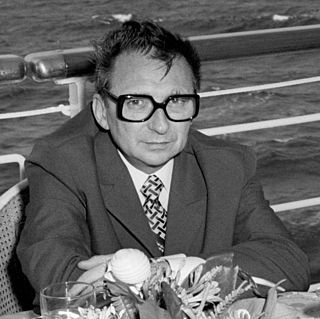 W
WIon Mihai Pacepa was a two-star general in the Securitate, the secret police of Communist Romania, who defected to the United States in July 1978 following President Jimmy Carter's approval of his request for political asylum. He was the highest-ranking defector from the former Eastern Bloc, and wrote books and articles on the inner workings of communist intelligence services. His best known work is the book Disinformation.
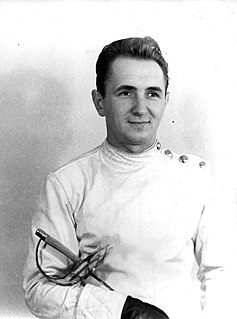 W
WJerzy Władysław Pawłowski was a Polish fencer and double agent.
 W
WHerbert Arthur Philbrick was a Boston-area advertising executive who was encouraged by the FBI to infiltrate the Communist Party USA between 1940 and 1949. His autobiography was the basis for the 1950s television series I Led 3 Lives.
 W
WMyra Soble together with her husband Jack Soble was tried and jailed for her involvement in the Soble spy ring.
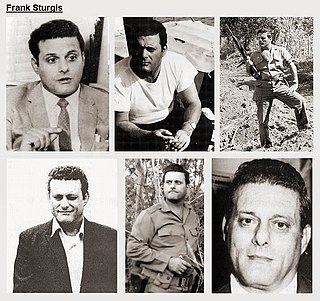 W
WFrank Anthony Sturgis, born Frank Angelo Fiorini, was one of the five Watergate burglars whose capture led to the end of the presidency of Richard Nixon. He served in several branches of the United States military and in the Cuban Revolution of 1958, and worked as an undercover operative for the Central Intelligence Agency. Sturgis and Miami CIA head David Morales met with E. Howard Hunt shortly before the assassination of John F. Kennedy.
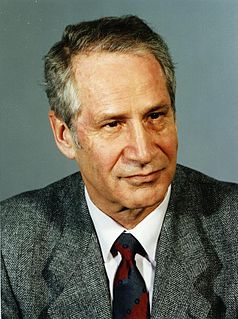 W
WMarkus Johannes Wolf was head of the Main Directorate for Reconnaissance, the foreign intelligence division of East Germany's Ministry for State Security. He was the Stasi's number two for 34 years, which spanned most of the Cold War. He is often regarded as one of the most well known spymasters during the Cold War. In the West he was known as "the man without a face" due to his elusiveness.
 W
WAnatoly Antonovich Yatskov, also known as Anatoli Yatzkov – was a Soviet consul in New York as well as an intelligence officer handling American agents in the U.S. Manhattan Project during WWII. His spy cover was eventually blown by the U.S. Army Venona Program which identified him as a key NKVD agent involved in the 1940s Atomic Spy Ring.